Create labour contract¶
Requirements
This tutorial requires the installation of the following applications/modules:
Viindoo software system with the employee contracts management feature will help you to:
Keep track of contracts history.
Manage payroll contributions and salary information.
Manage the contract throughout the whole process from when it is signed until it’s expired, extended.
How to create a contract¶
To create a Labor contract (or Contract), access Employees > Employees > Contracts.
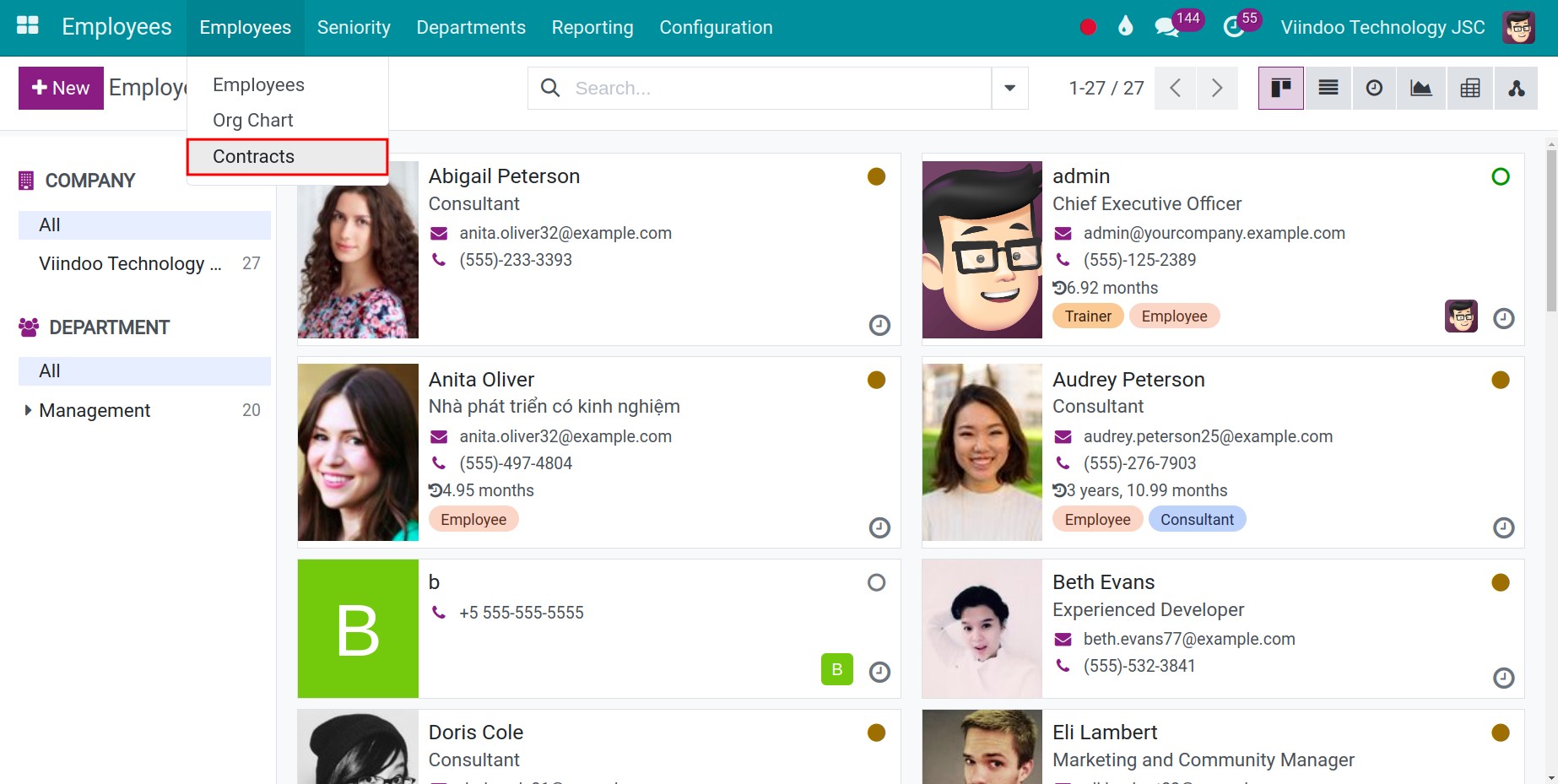
You will see a list of Contracts that are grouped by Status, click New.
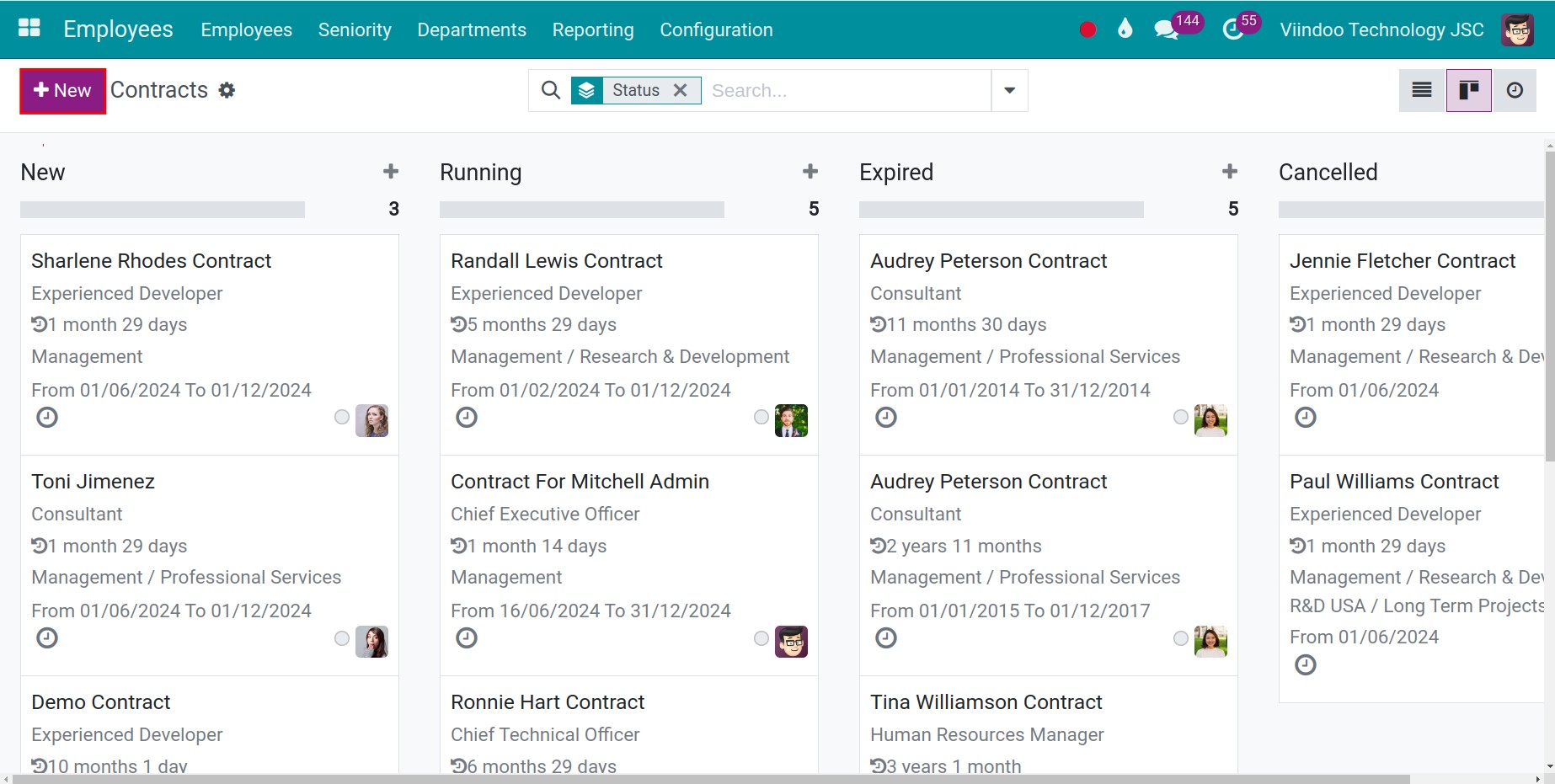
Your screen will show the following Contract view:
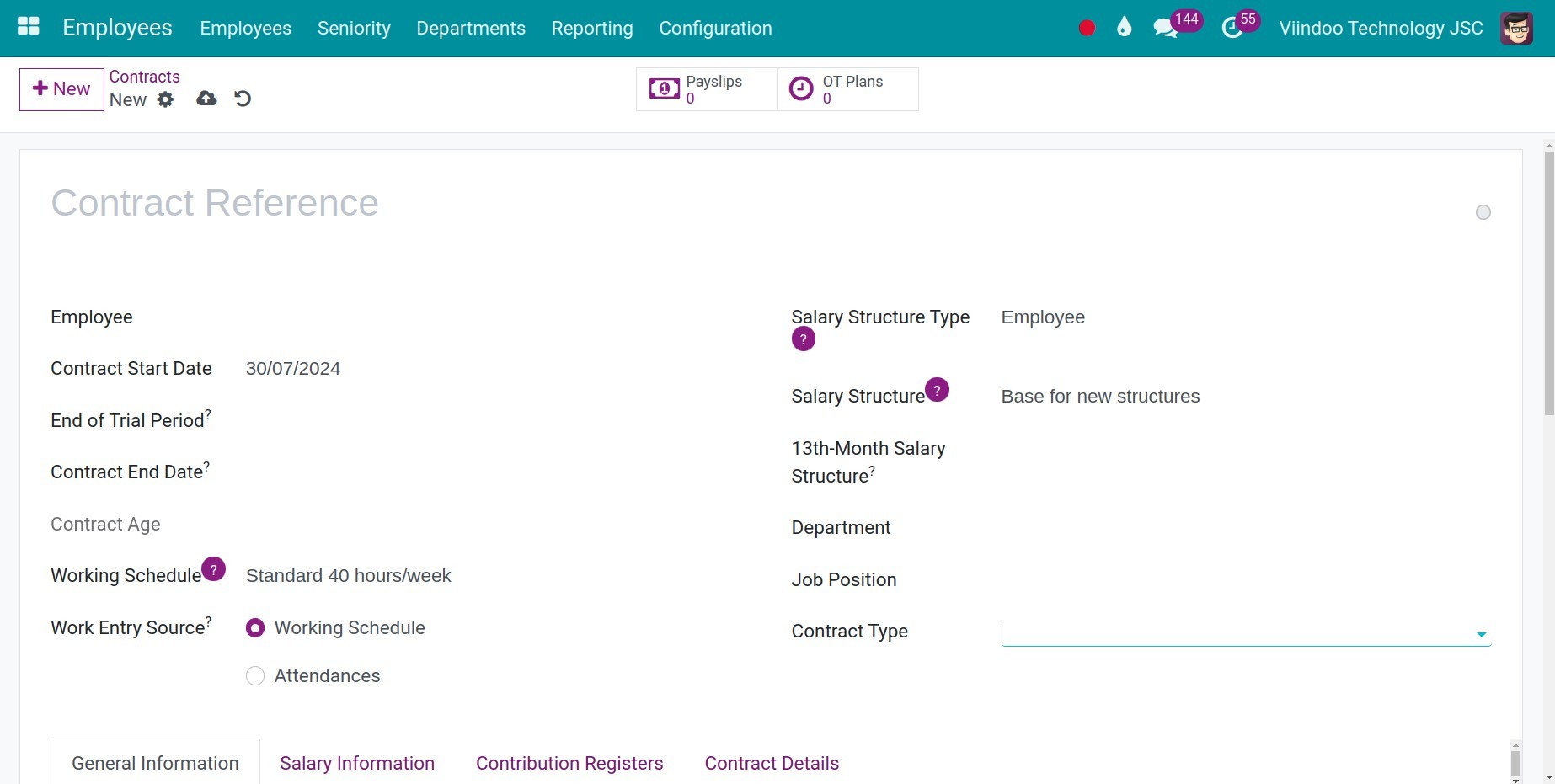
Overview information¶
This is where you fill in the basic information of the Contract. Insert the following information:

General information:
Contract Referral: contract name. Add a number/name of the contract according to your company’s regulations.
Employee: The employee attached to this contract.
Contract Start Date: The date the labor contract start.
End of Trial Period: Enter the trial period for your employees.
Contract End date: The date the labor contract end. If the contract doesn’t limit the working time then you can leave it blank. If this is a contract for the trial period then you need to select the same date for the End Date and End of Trial Period fields so that the software can recognize this contract as trial period contract.
Salary Structure Type: the salary structure type corresponding to the employee’s position.
Salary Structure: the salary structure corresponding to the employee’s position.
Working Schedule: The employee working schedule, suggested from the Working schedule field on the Salary structure type’s setting. You can also choose another Working schedule but this field needs to make sure that it is the same as the Working schedule on the Employee view.
Work Entry Source: defines the source of work entries generation. Work entries will be generated from the working hours or employee’s attendances.
Department: The department where this employee belonged. This field will be auto-filled if you have already set up the Department info on the Employee view.
Job Position: The employee’s position. This field will be auto-filled if you have already set up the Job position info on the Employee view.
Contract Type: the contract type corresponding to the employee’s contract.
13th-Month Salary Structure: Choose the salary structure type that corresponds to your company’s policies.
General Information¶
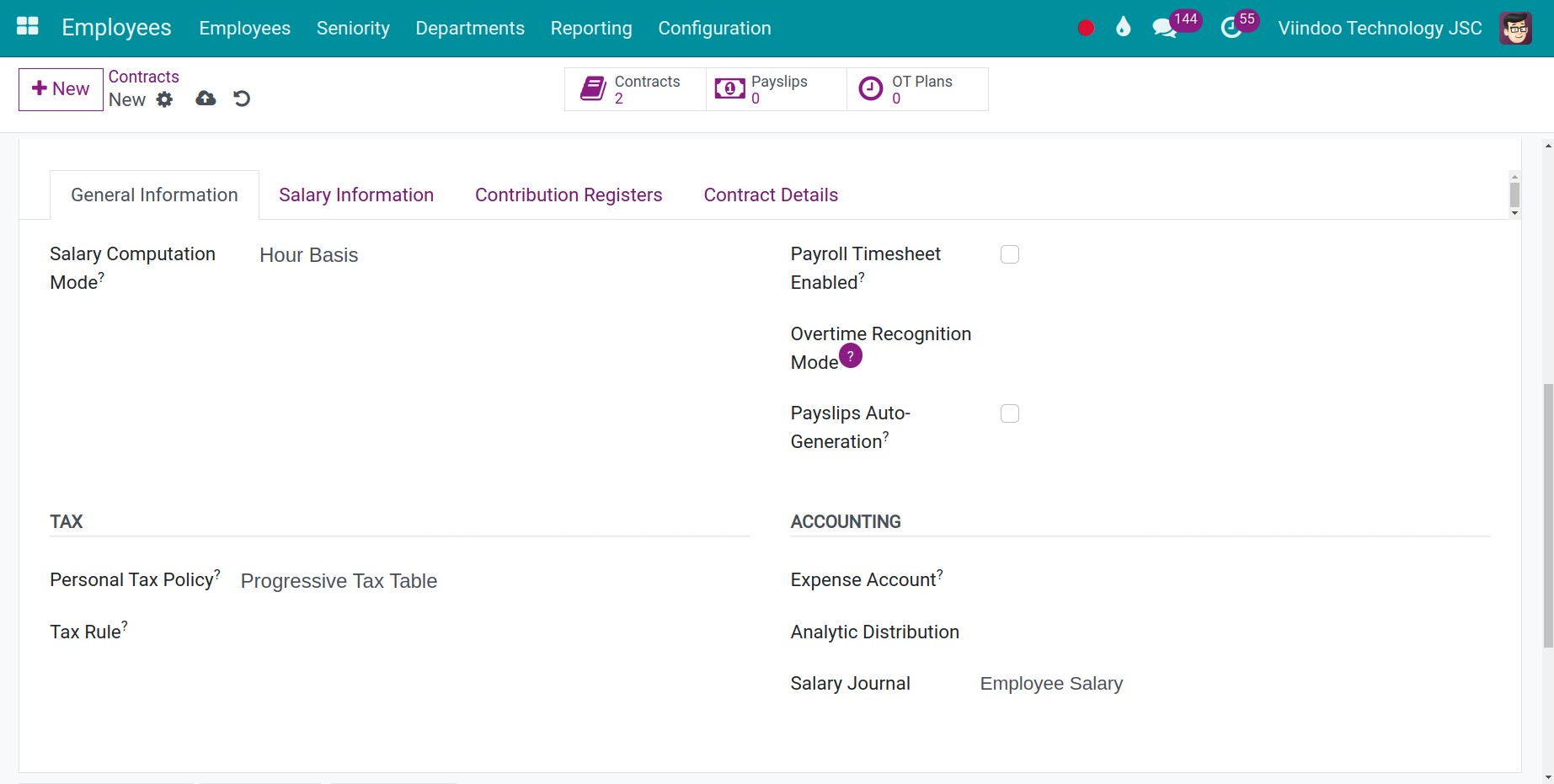
General Policy:
Salary Computation Mode: Employee salary is calculated based on day or hour.
- Hour basis: the employee’s salary is calculated after their working hours.
- Day basis: the employee’s salary is calculated after their working days.
Overtime Recognition Mode: how the actual working overtime of the employee is calculated.
- By Plan: No recognition will be required. All the planned overtime duration will be considered as actual.
- Attendance: Actual overtime will be calculated based on attendance entries that match the planned overtime.
- Timesheet: Actual overtime will be calculated based on recorded timesheet entries that match the planned overtime.
- Attendance or Timesheet: Actual overtime will be calculated based on EITHER attendance entries OR recorded timesheet entries that match the planned overtime.
- Attendance and Timesheet: Actual overtime will be calculated based on BOTH attendance entries AND recorded timesheet entries that match the planned overtime.
Note
If this field is left empty, the value will be taken from the corresponding company’s settings.
Personal Tax Policy and Tax Rule: Personal Tax Policy and Tax Rule applied for this employee. You need to select the most suitable regime for the contract (probationary or officially).
Payslips Auto-Generation: the software will auto-create payslips periodically according to the setting on the Employee’s contract. (Refer to document Create Payslips Automation for more information).
Payroll Timesheet Enabled: If enabled, the payslips of this contract will respect timesheet log of the corresponding employee. Payroll Manager may need to create salary rule(s) to process employees timesheet data for payslip computation.
Expense Account: This field will be used for distribution employee expenses into general accounting system.
Analytic Distribution: Choose an account analytic account for distribution.
Salary Journal: Choose a salary journal for the management of expenses.
Salary information¶
This is where you inform the salary-related information. You have to install the to_hr_payroll module to get more information before setting salary in labour contract.
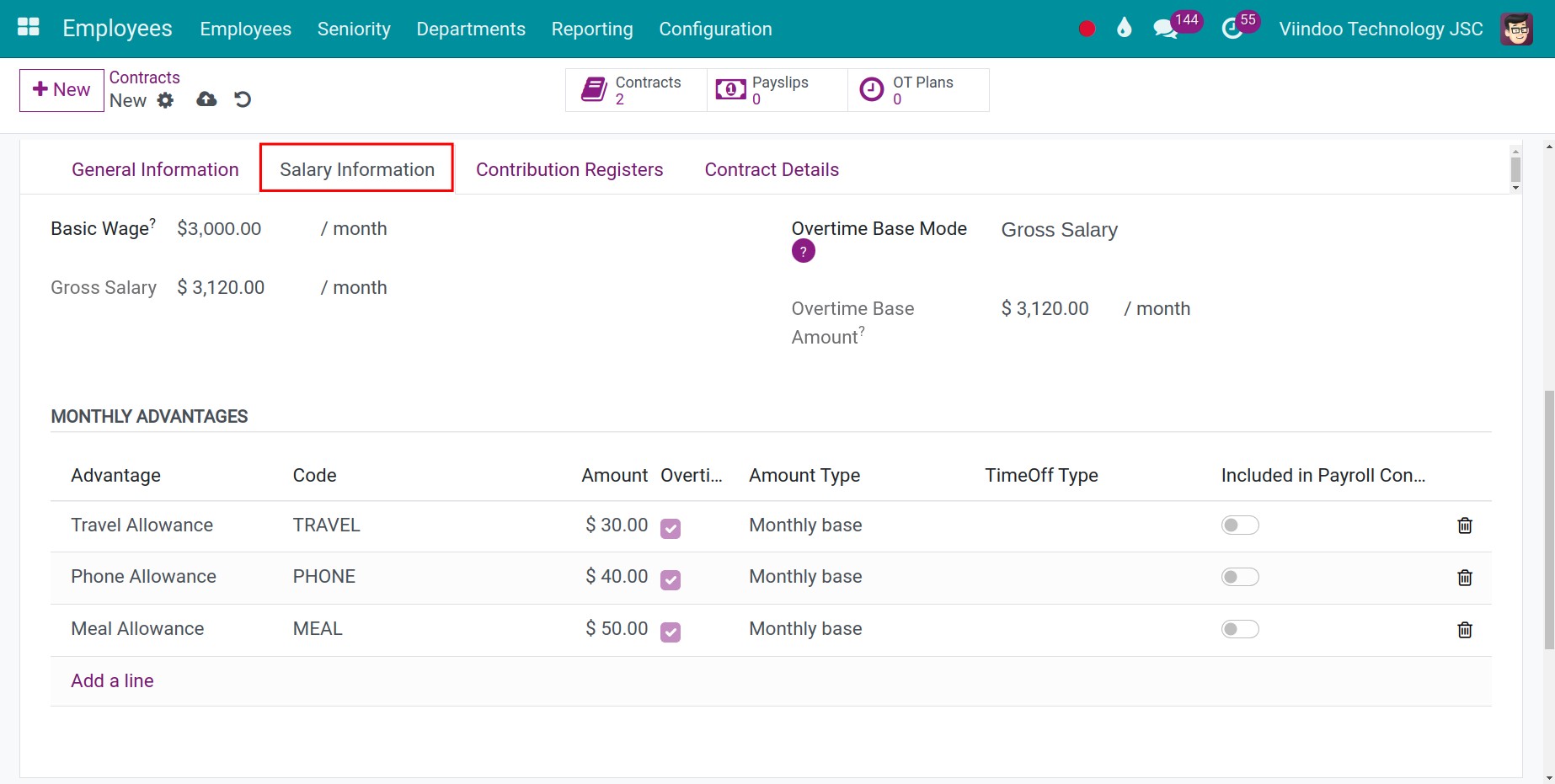
Basic Wage: the employee’s basic salary.
Gross Salary: gross salary = basic wage + advantages.
Overtime Base Mode: The overtime base mode for overtime pay computation. Refer to: Calculating overtime salary
- Manual Input: you can define any base amount below manually.
- Basic Wage: the base amount will be the contract’s basic wage.
- Gross Salary: the base amount will be the contract’s Gross Salary.
- Wage Plus: the base account will be the contract’s Wage Plus + Overtime Base Factor
Monthly/Advantages: The advantages the employee receives. Click Add a line to add an Advantage, the system will suggest the value at the Amount column based on the Advantage form. Select the Included in Payroll Contribution Register option if you want to register this monthly advantage into the Payroll contribution Register.
Contract Details¶
You can take notes of any information you want in this tab.
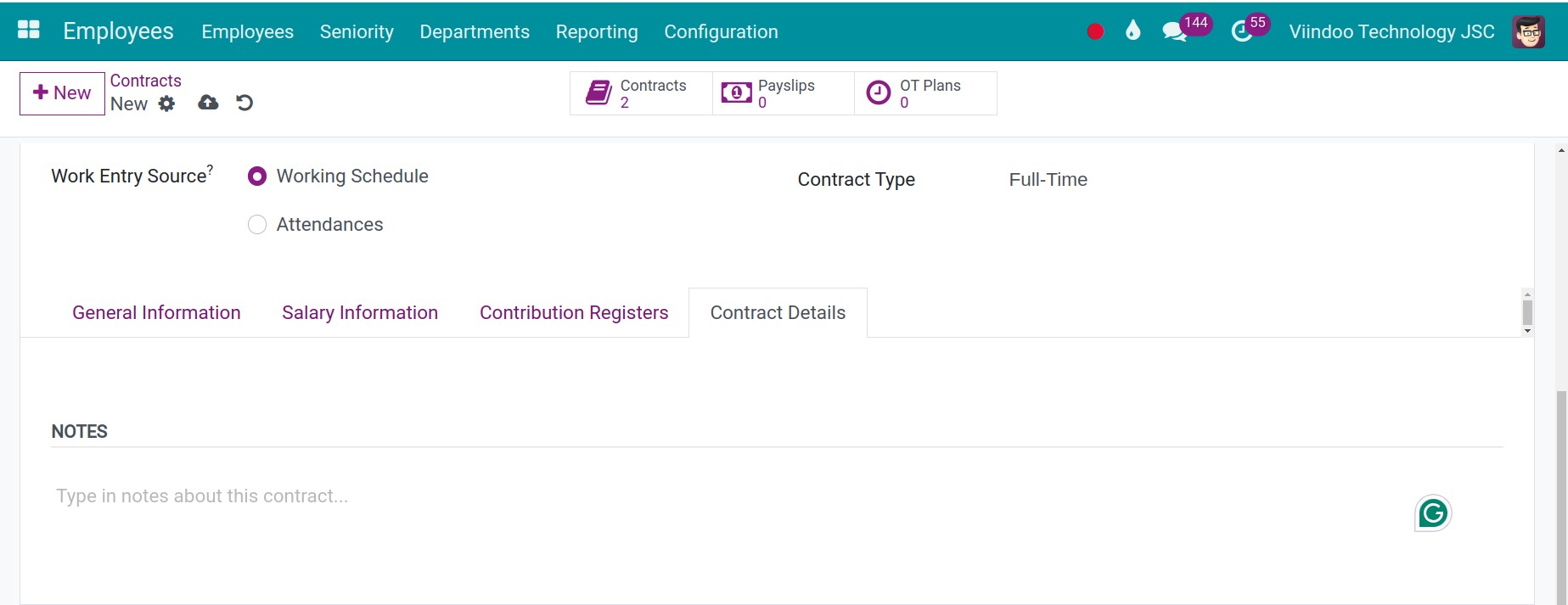
Contribution Registers¶
This is where to register contributions from employees’ salaries.
Click on Payroll Contribution Types to select a payroll contribution type you want to create for this employee.
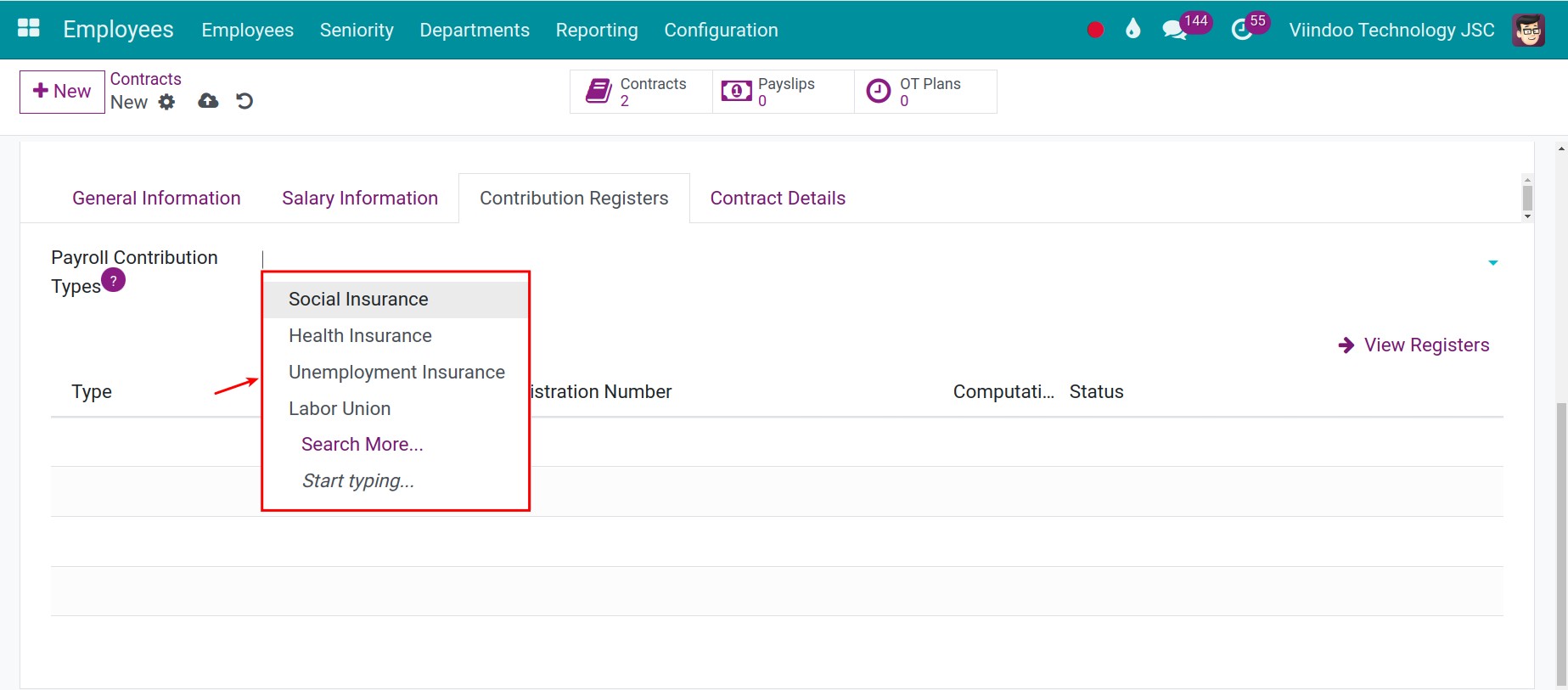
After selecting Payroll contribution types, click Generate Payroll Contribution Registers.
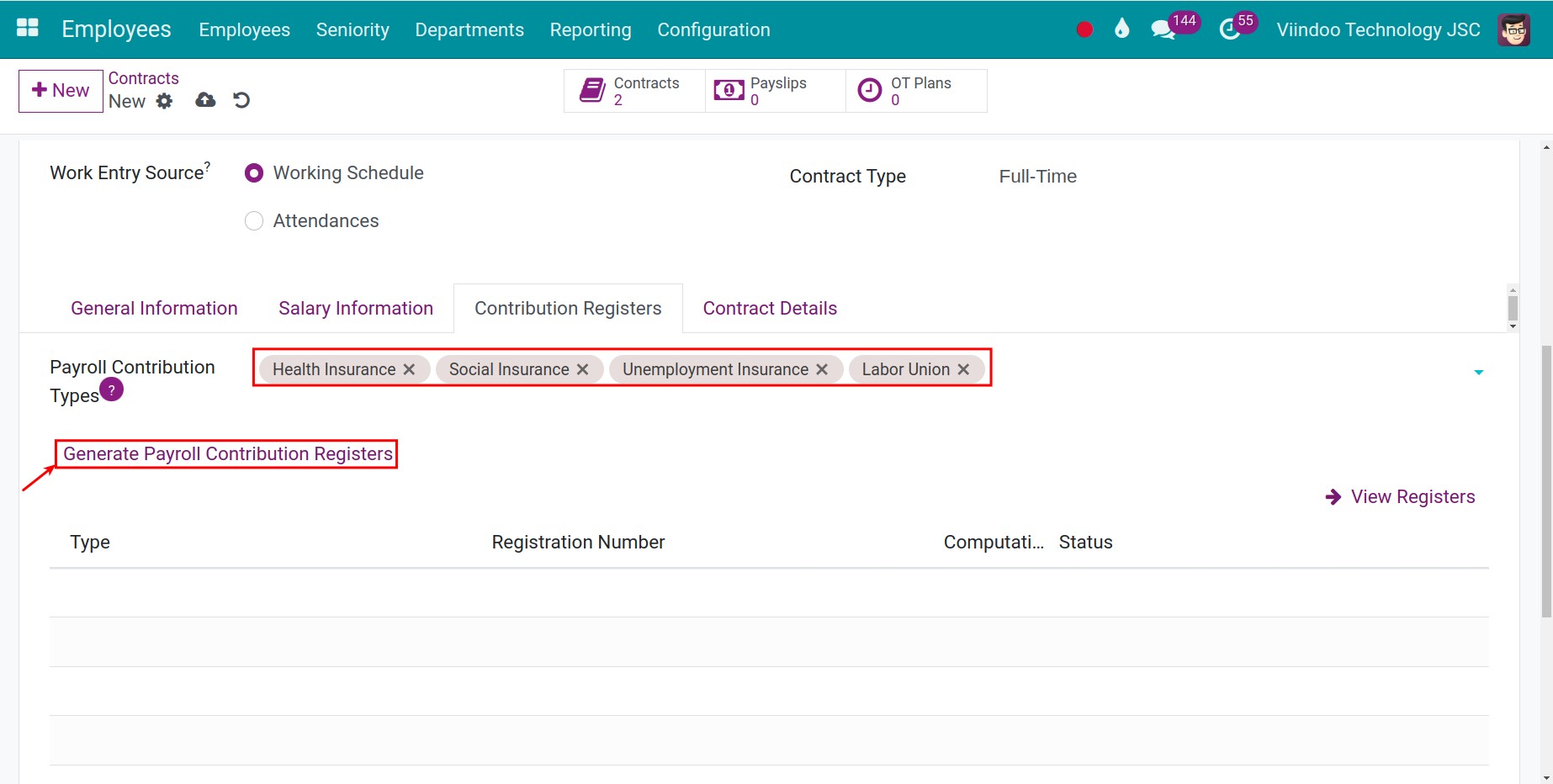
The software will generate a Payroll Contribution Register board and draft payroll contributions. To change the information and confirm the Payroll contribution, click on View Registers button, and choose the corresponding line.
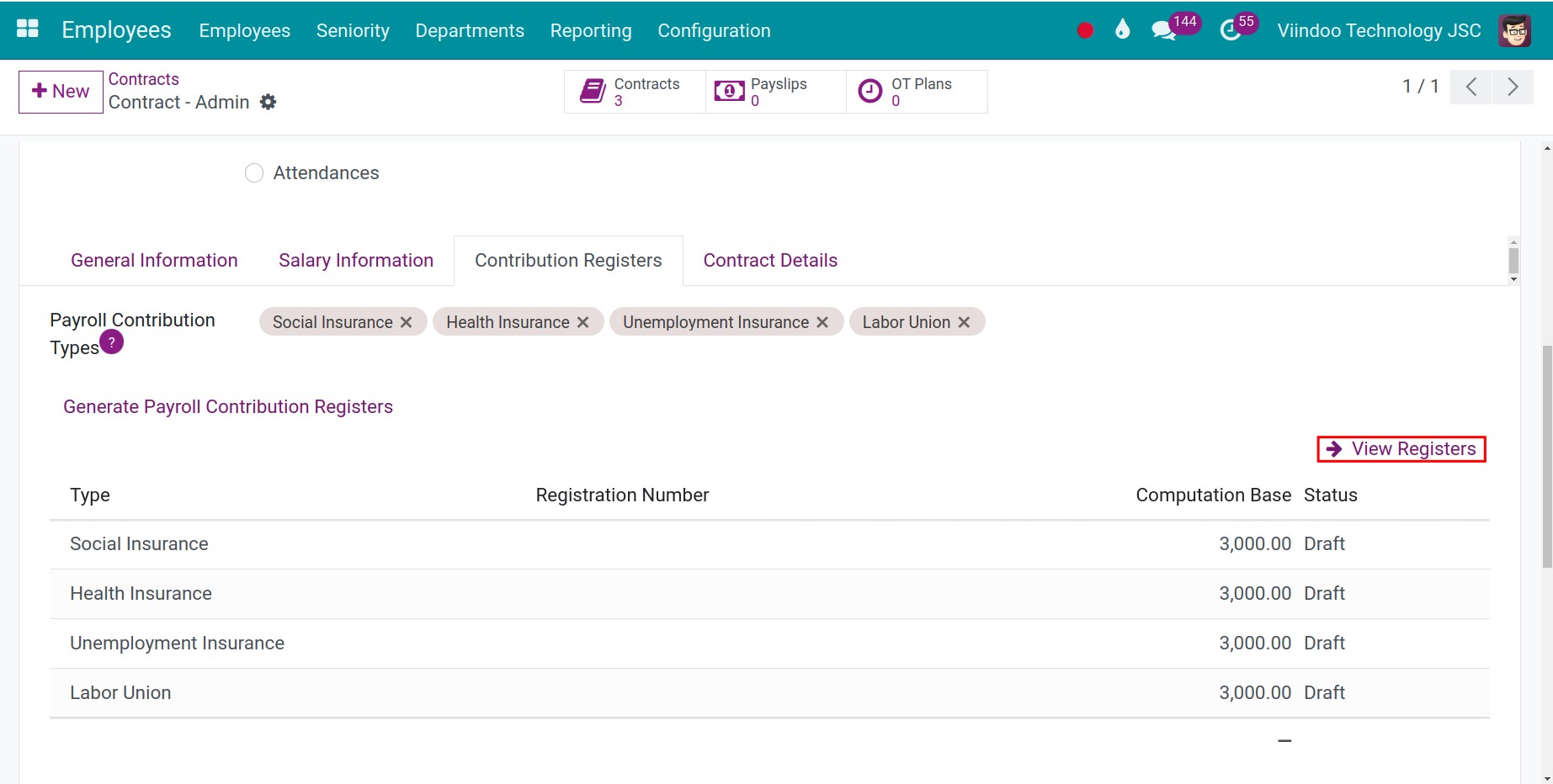
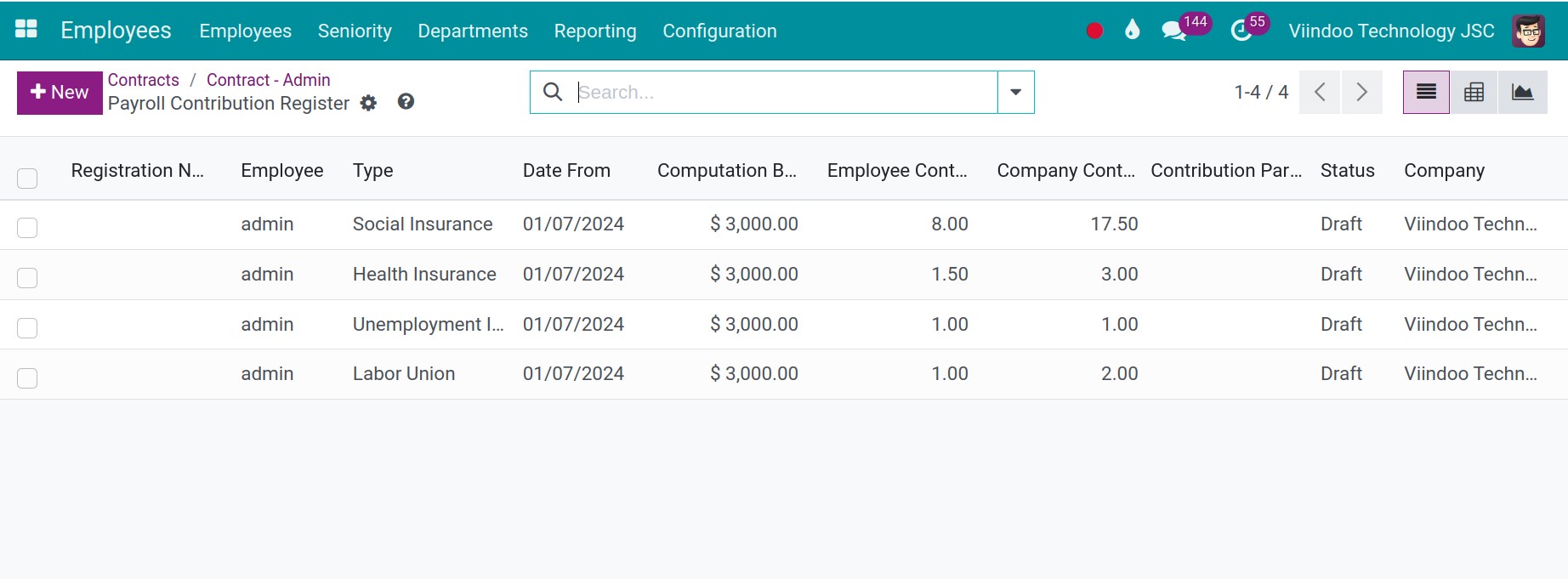
A Payroll Contribution Register window will open on your screen, you can adjust the needed information, and then click Confirm to register the contributions into the payroll.
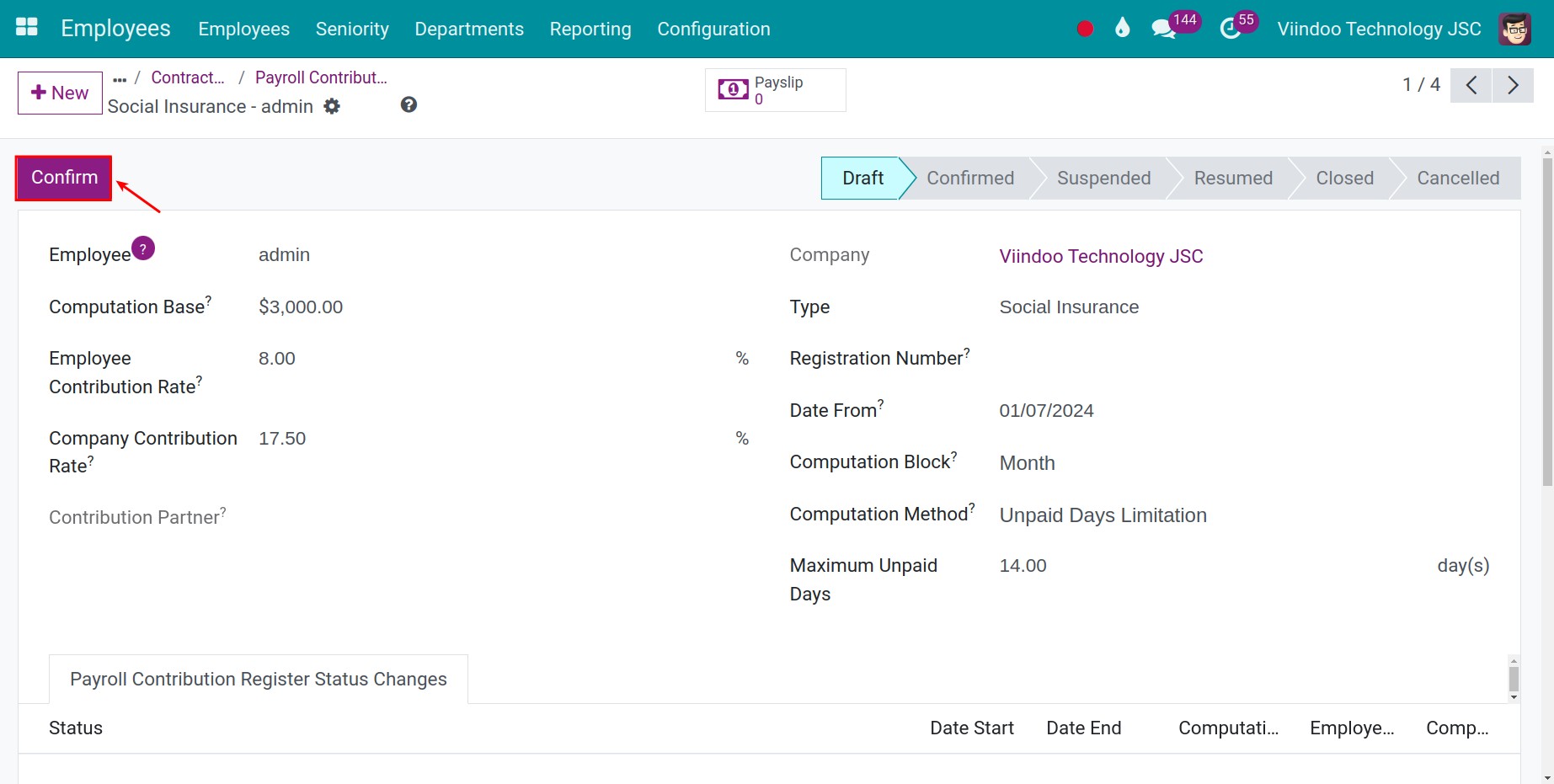
Change the Contract stage¶
After finishing setting up the needed information on the contract, click Running to run the contract.

If the contract’s end date is within the next 7 days, the contract’s stage will automatically turn red or you can also mark a contract about to expire by clicking on red alert on the right of the interface.
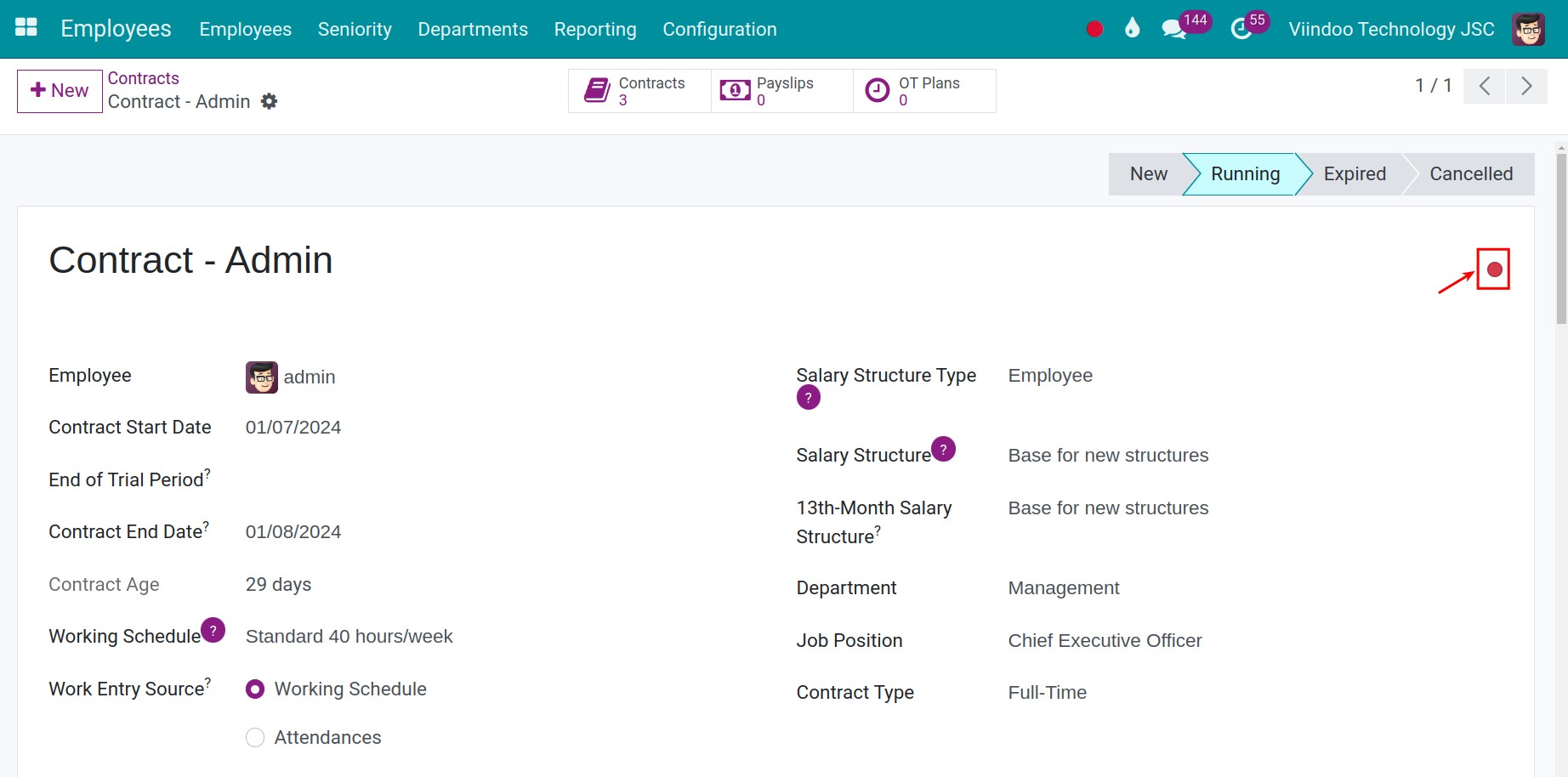

If the contract is expired, you can click Expired to change the contract to the Expired stage. In case contract is not used anymore, Click Cancelled to change it to the Cancelled stage, the payroll won’t generate base on contract in next month.

Moreover, you can change the stage for a contract at the Kanban contract view by dragging it to a different stage.
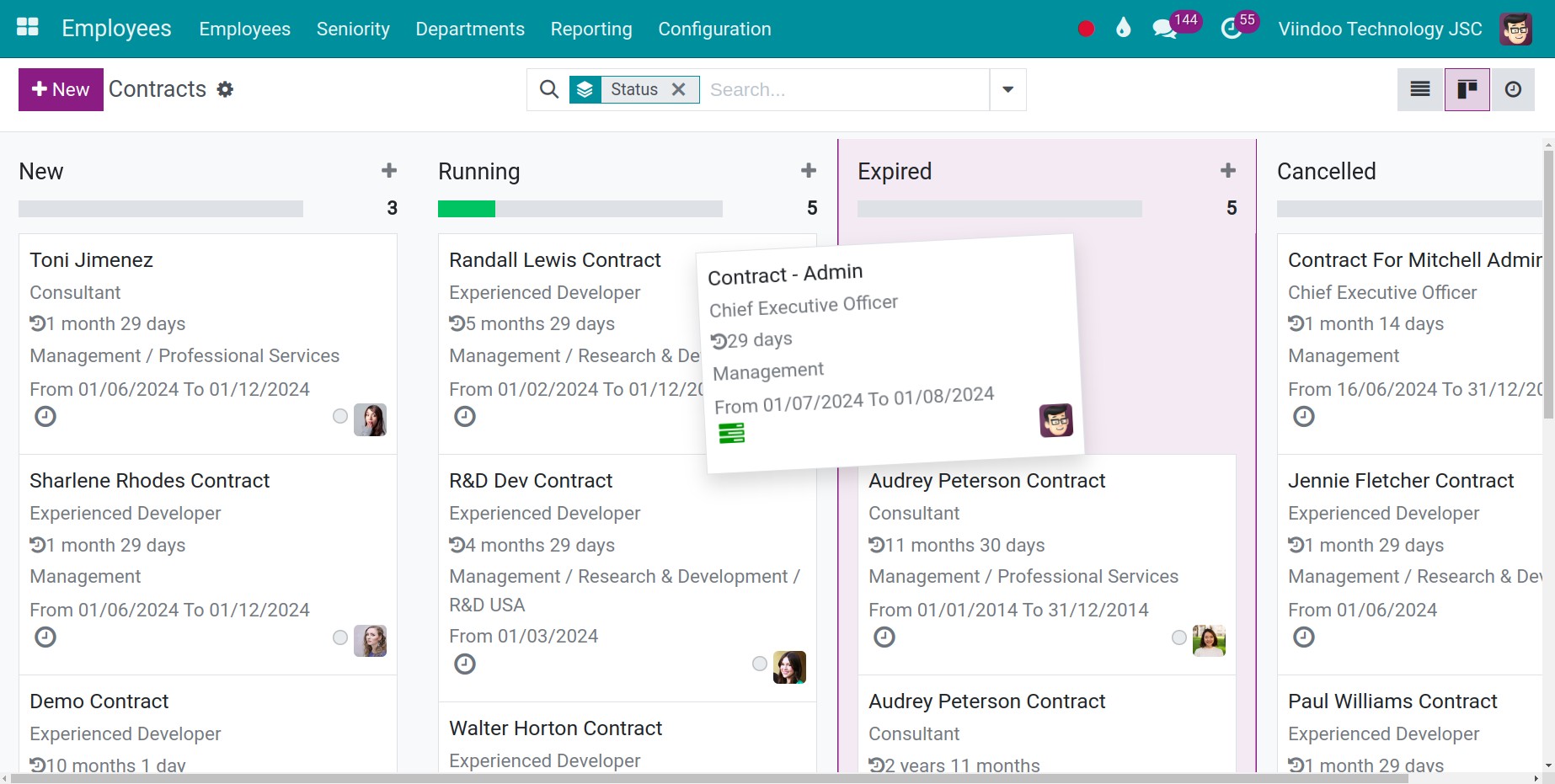
Adjust contract information¶
There is no payslip¶
When the contract is in Running or Expired status but no salary slip has been generated and you want to edit the contract information. Access the contract and edit the information you want, then save. Changed information will be recorded in the change history by the system.
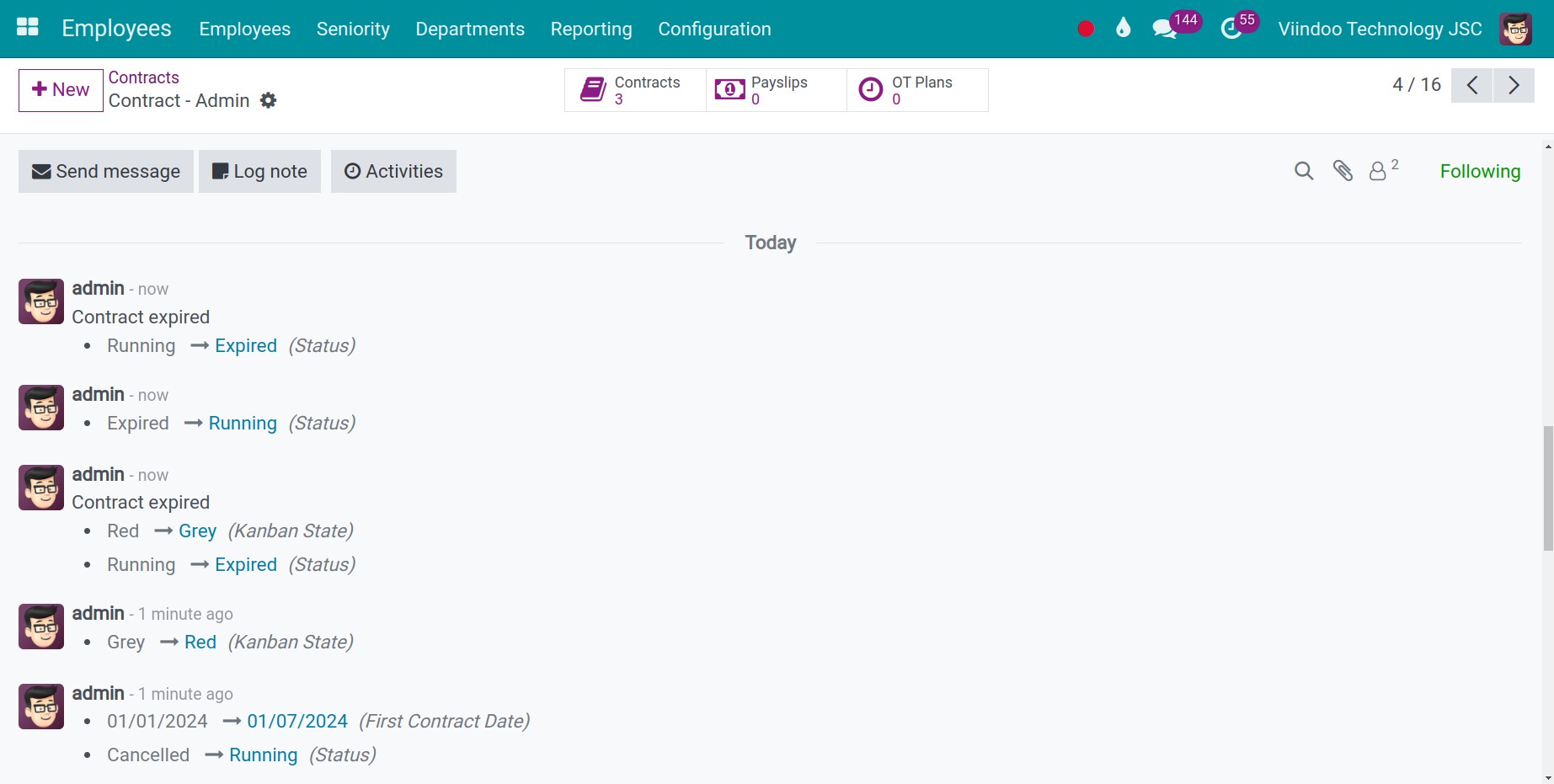
Note
If you have a payslip in Draft status, you can click recalculate salary to update it according to the newly edited contract.
The contract has a payslip¶
The contract in Running status has generated a payslip but needs to change information related to payroll calculation such as: salary, allowances, salary structure, contributions from salary, work schedule, calculation rules tax, … then first need to bring this contract to expiration.
On the Contract details screen, enter Contract End Date and click the Expried.
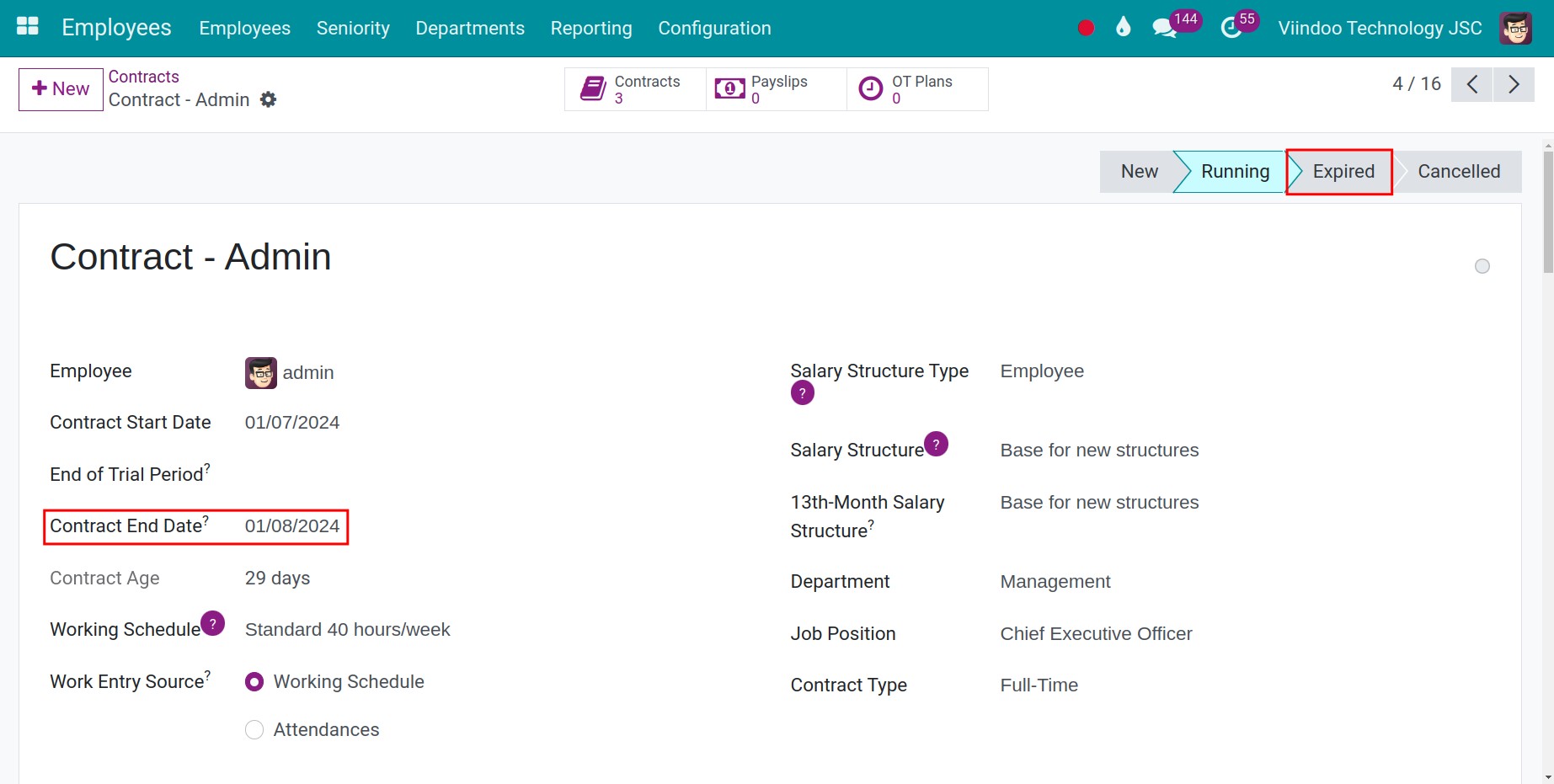
Contract status changes from Running to Expired.
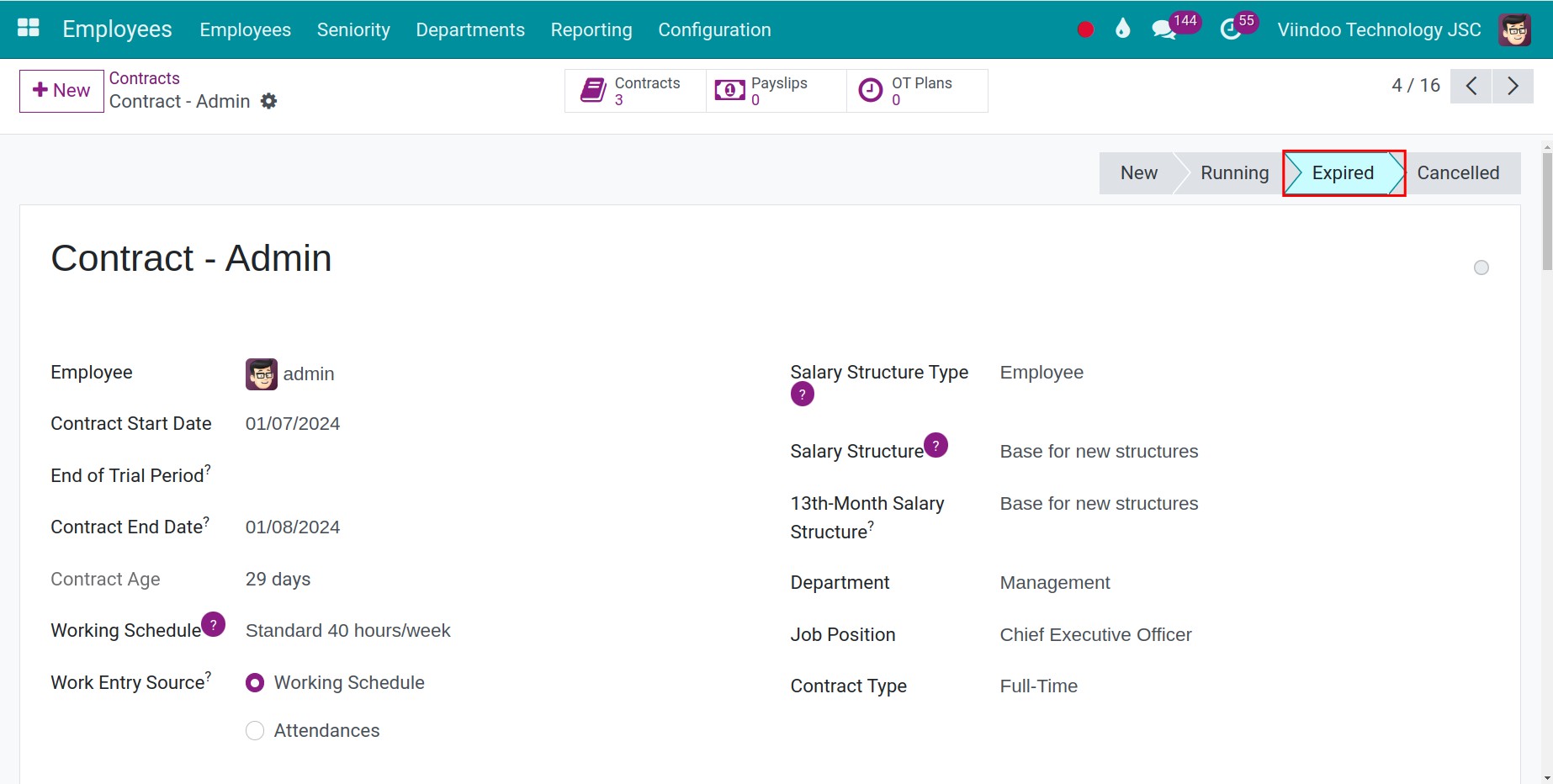
Next, you need to create a new contract with a starting time equal to the ending date on the old contract plus 1. Input and adjust contract information as required and save.

Click Running to change the status of the new contract to Running stage. The new contract will become effective.
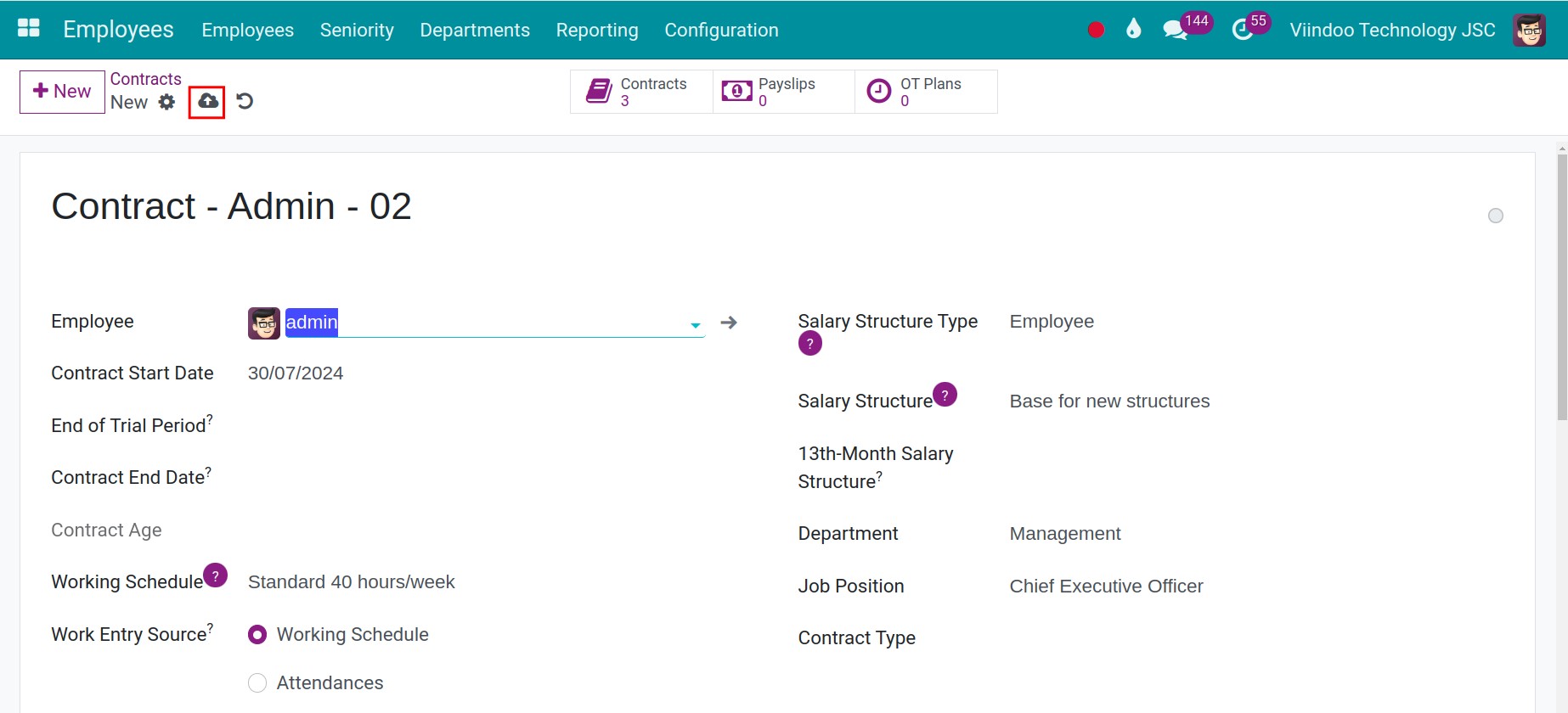
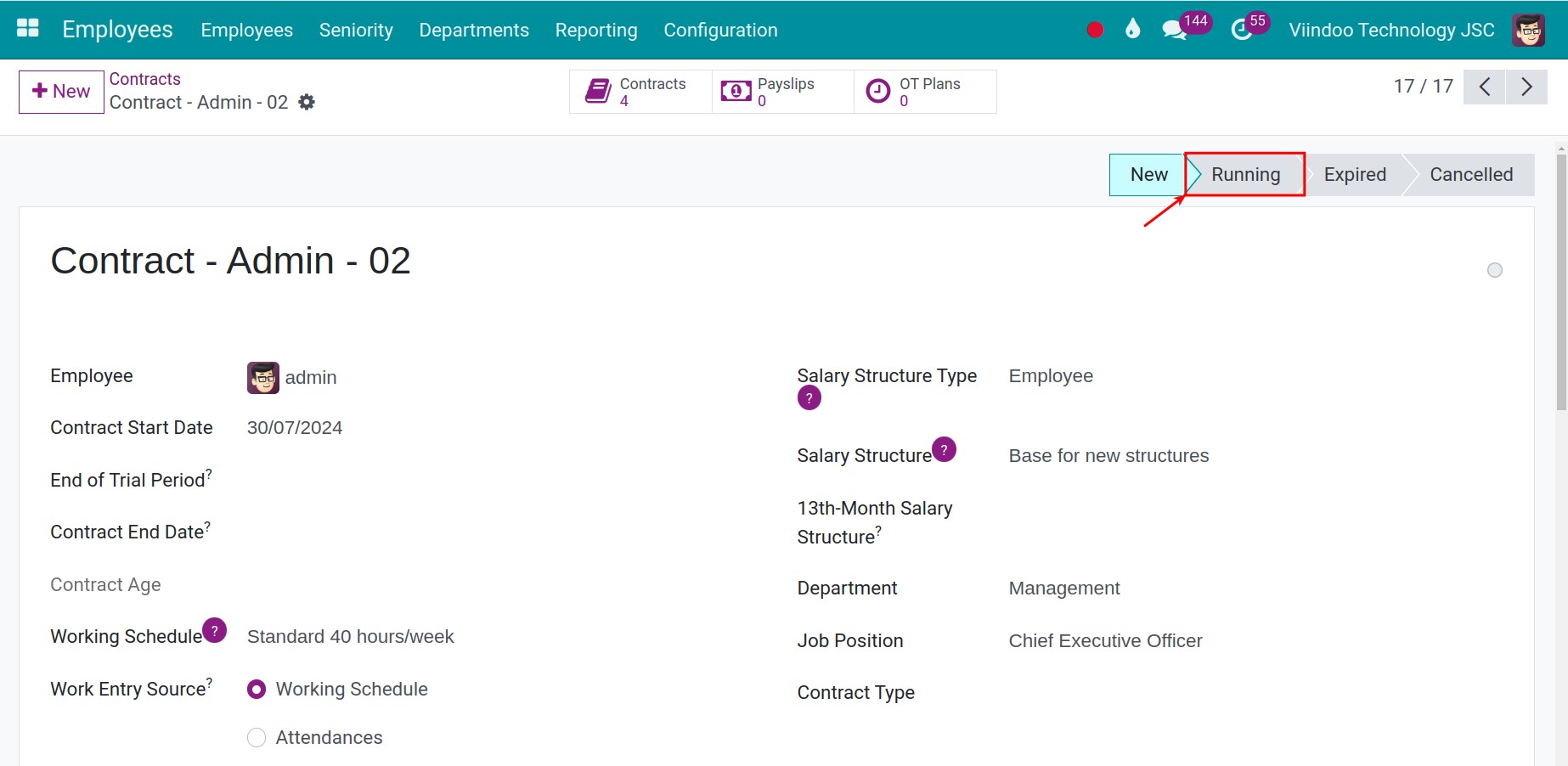
See also
Related article
Optional module